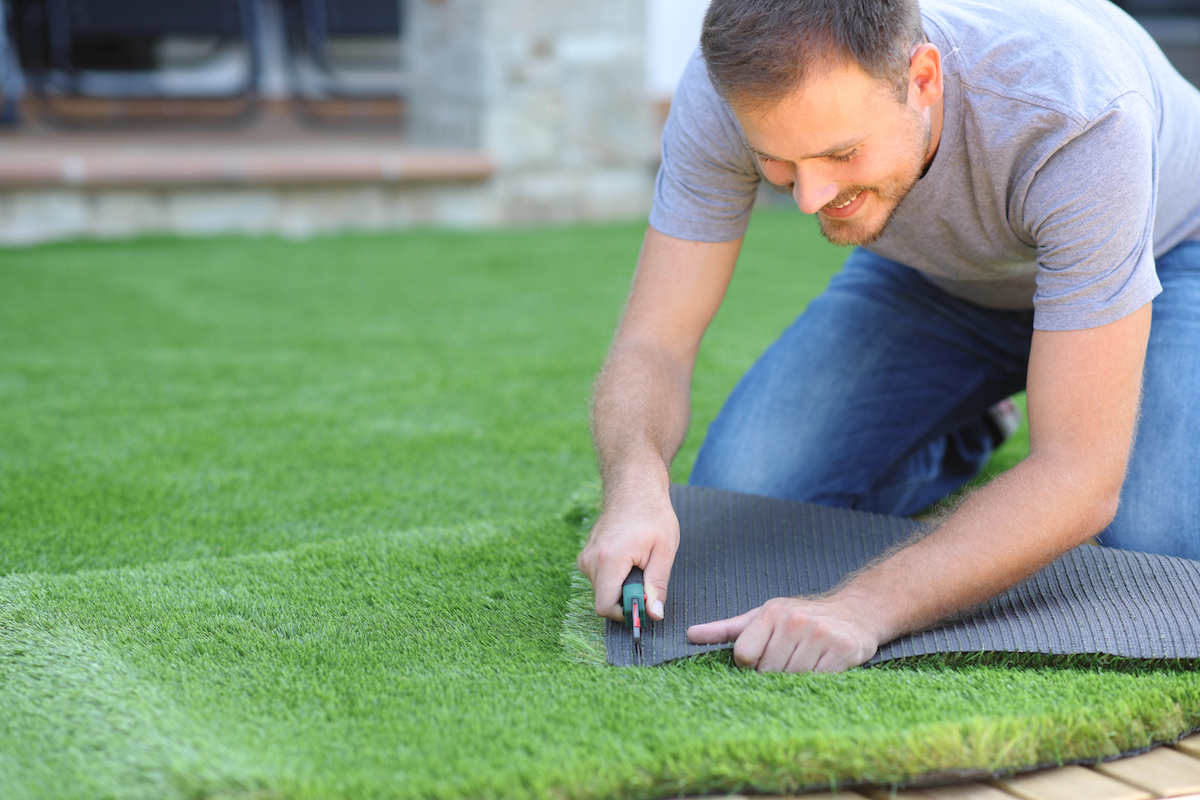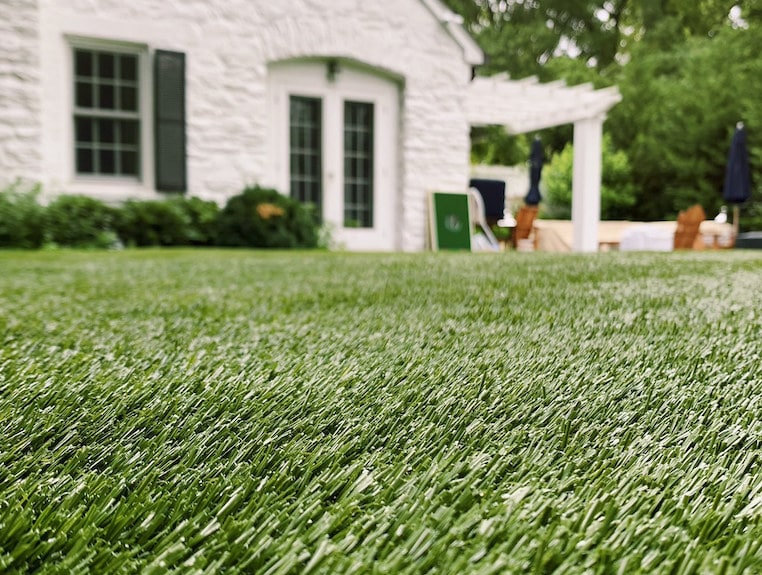Expert Arizona Turf Providers Delivering a Realistic Lawn Option
Expert Arizona Turf Providers Delivering a Realistic Lawn Option
Blog Article
Explore the Environmental Advantages of Opting for Synthetic Grass Solutions
The fostering of artificial grass options offers a compelling chance to attend to pushing ecological challenges. By substantially lowering water use and minimizing the application of unsafe chemicals, these alternatives not only promote lasting landscape design yet additionally protect regional ecological communities.
Water Conservation Benefits
One of the most substantial advantages of synthetic turf is its capacity to preserve water. In contrast, artificial lawn does not require watering, substantially decreasing the overall need for water resources.
By getting rid of the need for normal watering, synthetic lawn contributes to lasting landscape practices and helps alleviate the environmental influence of extreme water consumption. Moreover, the preservation of water extends to the decrease of runoff, which can cause soil erosion and river pollution.
Furthermore, the installation of synthetic grass enables house owners and municipalities to assign water sources more efficiently, focusing on crucial uses such as drinking water and agriculture. The change in the direction of synthetic grass not only promotes accountable water use yet also aligns with wider environmental objectives focused on maintaining all-natural sources.
As areas increasingly prioritize sustainability, the water conservation benefits of synthetic grass offer an engaging instance for its fostering in industrial and property landscape design jobs.
Lowered Chemical Use
The change to synthetic lawn considerably reduces the dependence on chemical therapies generally used in natural grass maintenance. Traditional turf monitoring normally involves the application of herbicides, fertilizers, and chemicals to promote development and control pests. These chemicals can position dangers to human health, neighborhood wildlife, and the atmosphere, adding to soil and water contamination.
On the other hand, synthetic grass removes the demand for these damaging compounds. As soon as mounted, it calls for minimal upkeep, primarily being composed of routine cleaning and seldom infill replenishment. This reduction in chemical usage not just benefits the prompt atmosphere however also adds to wider eco-friendly stability. By lessening the launch of synthetic substances into the ecological community, synthetic grass advertises much healthier soil and water systems.
Moreover, the lack of chemical runoff related to synthetic grass setups aids safeguard neighborhood waterways from contamination, sustaining water life and keeping biodiversity. Arizona turf. As communities progressively prioritize lasting methods, opting for man-made turf provides a practical option that aligns with environmental preservation objectives. Via this shift, property owners can take pleasure in lavish environment-friendly spaces without compromising ecological health, paving the way for a much more sustainable future
Lower Carbon Footprint

Furthermore, the setup of synthetic grass can cause substantial water conservation. Natural yards call for substantial quantities of water for watering, which not just includes in the carbon footprint related to water extraction and treatment however additionally strains local water resources. On the other hand, synthetic grass requires marginal maintenance, requiring no watering, thus dramatically lowering water use and its associated energy costs.
Additionally, the durability of man-made lawn contributes to its reduced carbon impact. With a lifespan of up to 15 years or more, the demand for constant substitutes is reduced, causing less waste and lower power intake in production and dealing with traditional grass alternatives. On the whole, synthetic lawn offers a lasting choice for environmentally aware landscape design.
Habitat Preservation
Habitat preservation is a vital factor to consider in the dispute over landscape design choices, specifically click this link when comparing artificial grass to all-natural lawn. All-natural yard lawns typically require considerable upkeep, including making use of herbicides, pesticides, and plant foods, which can negatively influence regional environments. These chemicals can leach right into the soil and rivers, harming indigenous flora and animals and disrupting neighborhood habitats.
Artificial grass removes the need for dangerous chemicals, therefore safeguarding close-by wild animals and keeping the honesty of bordering ecosystems. The installation of synthetic turf can lead to the conversion of former turf areas into more biodiverse landscapes, such as pollinator yards or indigenous plant locations, which can sustain regional wild animals.
Eventually, the shift to synthetic grass not only saves water and minimizes maintenance efforts however likewise promotes a much more unified connection between human activities and the natural surroundings, promoting habitat conservation in the process.
Long-Term Sustainability
Lasting sustainability is a crucial consider assessing the straight from the source benefits of artificial turf over standard grass yards. Among one of the most substantial benefits of man-made grass is its sturdiness; it can last up to 15-20 years with minimal upkeep, whereas natural grass calls for regular reseeding and substitute. This durability decreases the demand for continuous resources, such as water, plant foods, and pesticides, which are essential for keeping a healthy yard lawn.
In addition, synthetic grass adds to a reduction in carbon exhausts related to grass care equipment. Standard lawns usually require gas-powered lawn mowers, trimmers, and blowers, every one of which contribute to air contamination. Phoenix turf companies. On the other hand, fabricated turf removes the need for such tools, advertising a cleaner setting
In addition, the production of synthetic grass progressively utilizes recycled products, improving its sustainability account. As makers embrace environmentally friendly techniques, the environmental footprint of fabricated turf remains to reduce.

Conclusion
The fostering of man-made turf remedies presents substantial environmental benefits, consisting of substantial water preservation, decreased dependence on dangerous chemicals, and a lower carbon impact. Moreover, synthetic grass aids in maintaining natural environments by reducing land disruption and promoting lasting sustainability with using long lasting materials. Collectively, these variables underscore the capacity of synthetic grass to contribute favorably to environmental health and use a viable option to typical landscaping methods in a significantly click for more info resource-conscious world.
In contrast, man-made lawn does not need watering, substantially lowering the overall need for water sources. By reducing the launch of artificial substances into the environment, fabricated lawn promotes healthier soil and water systems.
Additionally, the setup of man-made lawn can result in significant water conservation. In contrast, man-made grass requires very little upkeep, needing no watering, therefore dramatically reducing water use and its linked power prices.

Report this page